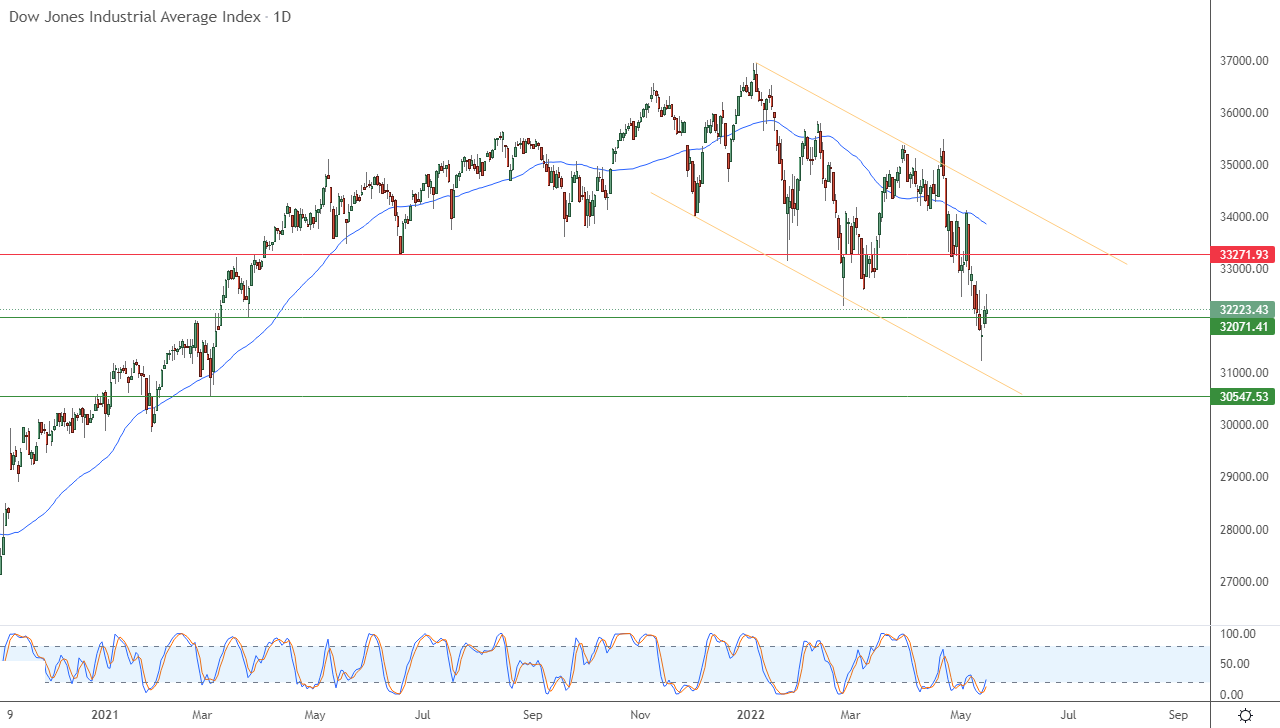The Dow Jones Industrial Average rose during its recent trading at the intraday levels, to achieve gains for the second day in a row, by 0.08%, to gain 26.76 points. It settled at the end of trading at the level of 32,223.43, after rising by 1.47% in Friday's trading, during the week. The index recorded losses of -2.14%, thus recording a series of weekly losses that continued for seven consecutive weeks, and it is the longest series of losses since July 2001.
Seventeen of the index's 30 components rose, and the list of the most-percent-increasing stocks was topped by Chevron Corp. by 3.06%, followed by Merck & Co. Inc. by 2.11%, followed by Verizon Communications Inc. by 1.78%.
Chinese data casts a long shadow over the world's second largest economy while a sharp decline in manufacturing in New York may be an early sign of the impact of the Federal Reserve's plans to tighten monetary policy to tackle rapidly rising inflation.
Five Federal Reserve officials are scheduled to speak on Tuesday, as traders prepare for a round of economic data that could provide hints about inflation and the Fed's next move. With the retail sales index later in the day, economists expect an increase of 1.1% month over month. If the surge in retail sales is driven by price hikes or inflation, markets may worry that the Fed will become more hawkish or aggressive in raising interest rates.
Technically, the index with its recent rises is trying to compensate for part of what it incurred from previous losses. It is trying to drain some of its clear oversoldness with the relative strength indicators, especially with the start of the influx of positive signals from them. This happened due to the dominance of the bearish corrective trend and the index’s trading in a descending price channel range. This limits its previous trading in the short term, as shown in the attached chart for a period of time (daily), in addition to that, the negative pressure continues due to its trading below the simple moving average for the previous 50 days.
Therefore, our expectations still suggest a return to the index's decline during its upcoming trading, especially in the event of its stability returning below the 32,000 support level, to target the support level 30,547.50 after that.

